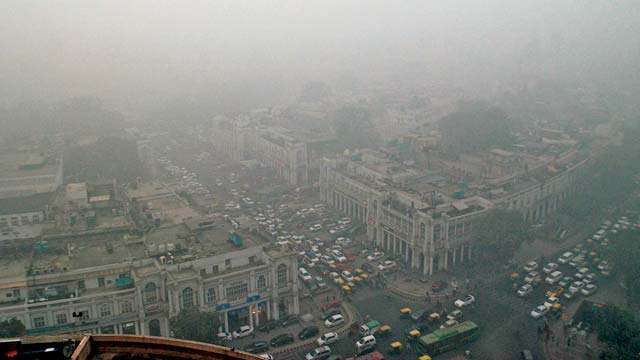Indoor air pollution caused 1.24 lakh premature deaths in India in 2015, more than the emissions from coal power plants or other industrial sources, a report published in Lancet, a noted medical journal, has said.
The findings establish what experts have been saying for long – that air quality in Indian households, especially in the rural areas, is lethal due to use of wood or cow dung as cooking fuel coupled with poor ventilation.
The report states that while the country recorded 524,680 premature deaths in 2015 due to air pollution caused by the presence of ultrafine particulate matter PM2.5, “the biggest contributor was household air pollution, which was responsible for 124,207 premature deaths per million people.” In May last year, the Indian government had embarked on a drive to provide free cooking gas connections to five crore women from poor households in three years with a view to reduce the use of polluting fuels such as wood and dried cow dung.
Among other sources, emissions from coal power plants, transport and other industries caused 80,368, 88,019 and 1,24,207 preventable deaths respectively, the report said.
The report, ‘The Lancet Countdown: Tracking Progress on Health and Climate Change’, is an account of a global study on climate change and the risks it poses in terms of temperature- related illness and death, worsening air quality, extreme weather events among others.
Pollutant particles PM2.5 measure less than 2.5 microns, up to 30 times finer than the width of a human hair, can embed themselves deep into the lungs and enter the bloodstream, triggering respiratory or cardiovascular diseases.
“Annual average PM2.5 concentrations in India are 59 ug/m3, with a maximum measurement of 176 ug/m3 in Gwalior. The WHO recommends that PM2.5 concentrations do not exceed 10 ug/m3,” the report said.
The corresponding standard set by the Indian authorities is 60 ug/m3.
China, with 966,793 premature deaths topped the list in 2015, but in its case the maximum number of deaths were caused due to industrial sources, the report said.
According to the ‘Lancet Countdown’, between 2000 and 2016, global labour capacity in populations exposed to temperature change is estimated to have decreased by 5.3%, with India bearing the brunt.
“Compared with the 1986-2008 average, labour capacity (or productivity) in India has decreased by 2.85% on average between 2000 and 2016. This decrease has been most significant from 2015, since when labour capacity has decreased by an average of 8.25%,” it said.
The report also refers to a “notable increase” in the heatwave exposure and length in India since 2014.
The findings come days before the UN climate summit in Bonn, Germany, scheduled to start on November 6.













